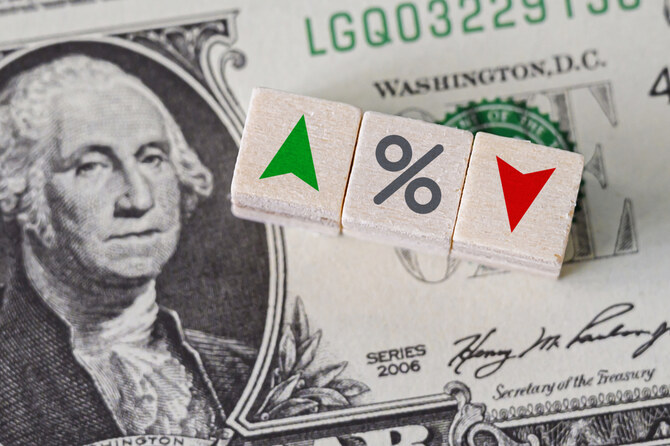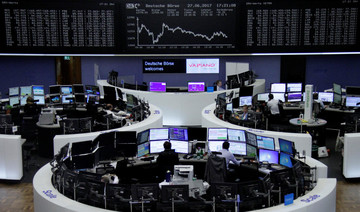RIYADH: Global borrowing hit a record $25 trillion in 2024, a $10 trillion surge from pre-pandemic levels, sparking concerns over sustainability, a new report showed.
The Organization for Economic Co-operation and Development said in its latest study, “Financing Growth in a Challenging Debt Market Environment,” that the figure is nearly triple the amount raised in 2007, driven by rising sovereign and corporate debt amid higher borrowing costs and economic volatility.
The surge in borrowing reflects a fragile global economy grappling with slower growth, persistent inflation, and geopolitical uncertainty, which have forced governments and companies to seek more debt to fund operations and maintain public services.
OECD Secretary-General Mathias Cormann said: “Sovereign and corporate debt levels continue to grow across the world, at a time of increasing borrowing costs and market volatility.” He urged governments to improve public spending efficiency, prioritize productive investments, and incentivize businesses to expand capacity.
Rising debt levels
The analysis warned that debt levels are projected to continue rising into 2025, with the aggregate central government marketable debt-to-gross domestic product ratio in OECD countries expected to reach 85 percent. This represents an increase of more than 10 percentage points since 2019, nearly double the 2007 level.
“The increase in 2024 was the first since 2020, reflecting slower projected GDP (gross domestic product) growth of around 2 percent annually during this period, compared to over 4 percent in 2022-23, when the economy was recovering from the pandemic,” the report said.
Bond yields in several major markets surged despite declining policy rates, exacerbating the challenges posed by higher sovereign and corporate indebtedness. This scenario increases borrowing costs and limits the fiscal space available for future investment at a time when substantial capital is needed to drive economic growth, respond to demographic changes, and meet defense and infrastructure needs.
Record bond issuance
Sovereign bond issuance in OECD countries is projected to reach a historic high of $17 trillion in 2025, up from $14 trillion in 2023. The total outstanding debt is expected to grow from $54 trillion in 2023 to nearly $59 trillion in 2025.
Emerging markets and developing economies also witnessed a sharp increase in sovereign borrowing, with total debt issuance rising from approximately $1 trillion in 2007 to over $3 trillion in 2024. China accounted for 45 percent of the total issuance in 2024, a rise from the 17 percent recorded between 2007 and 2014.
By the end of 2024, global corporate bond debt is set to reach $35 trillion, continuing a decades-long borrowing trend, mainly driven by non-financial companies whose debt has nearly doubled since 2008.
Higher borrowing costs
Governments and corporations are beginning to feel the weight of higher borrowing costs. In 2024, interest payments as a share of GDP increased in about two-thirds of OECD countries, reaching an average of 3.3 percent — a growth of 0.3 percentage points from the previous year.
“This means spending on interest payments is greater than government expenditure on defense in the OECD on aggregate,” the report explained.
Additionally, refinancing risks have grown significantly, with nearly 45 percent of sovereign debt in OECD countries set to mature by 2027. Corporate bond markets face similar pressures, with approximately one-third of all outstanding corporate bond debt scheduled to mature in the next three years.
Refinancing this debt at higher interest rates could further strain public and corporate finances.
Debt ownership shifts
The withdrawal of central banks from sovereign debt markets continued in 2024, with their holdings of domestic government bonds in OECD economies shrinking from 29 percent of total outstanding debt in 2021 to 19 percent in 2024.
Simultaneously, domestic households increased their share from 5 percent to 11 percent, while foreign investors expanded their holdings from 29 percent to 34 percent. This transition to a more price-sensitive investor base could amplify market volatility, particularly if new investors demand higher yields.
Climate financing challenges
A key theme of the OECD’s report is the financing required to meet global climate change objectives.
“If growth rates for public and private investment in the climate transition continue in line with recent trends, advanced economies will not be aligned with the Paris Agreement goals until 2041,” the study said.
The situation is even more difficult for emerging markets other than China, which would face a cumulative investment shortfall of $10 trillion to meet the Paris Agreement goals by 2050.
The report suggested that increasing public sector financing for climate initiatives could substantially raise public debt-to-GDP ratios. Alternatively, greater reliance on private capital would necessitate rapid development of capital markets, particularly in emerging economies.
“Financial regulation reforms will be essential, particularly to enhance capital market development in emerging markets,” the study noted.














